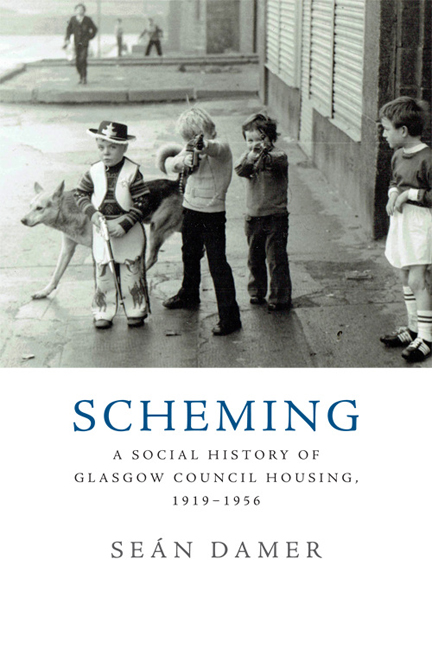Book contents
- Frontmatter
- Dedication
- Contents
- List of Tables and Figures
- Acknowledgements
- Preface
- 1 Introduction
- 2 Mosspark: Homes Fit for Heroes?
- 3 Hamiltonhill: A Pioneering Slum-Clearance Scheme
- 4 West Drumoyne: Blue-Collarland
- 5 Blackhill: Out of the Slums
- 6 Craigbank: Amateur Dramatics?
- 7 South Pollok: ‘The Bundy’
- 8 Alarums and Excursions
- Appendix 1 Balloting for a Council House
- Appendix 2 Methodological Notes
- Bibliography
- Index
6 - Craigbank: Amateur Dramatics?
Published online by Cambridge University Press: 12 November 2019
- Frontmatter
- Dedication
- Contents
- List of Tables and Figures
- Acknowledgements
- Preface
- 1 Introduction
- 2 Mosspark: Homes Fit for Heroes?
- 3 Hamiltonhill: A Pioneering Slum-Clearance Scheme
- 4 West Drumoyne: Blue-Collarland
- 5 Blackhill: Out of the Slums
- 6 Craigbank: Amateur Dramatics?
- 7 South Pollok: ‘The Bundy’
- 8 Alarums and Excursions
- Appendix 1 Balloting for a Council House
- Appendix 2 Methodological Notes
- Bibliography
- Index
Summary
Legislation
Craigbank, an ‘Ordinary’ scheme constructed under the 1946 Housing Act, is one of the constituent schemes within the Pollok housing estate. This land, south-west of the city centre, constituted the ancestral estate of Sir John Stirling Maxwell; Glasgow Corporation entered into negotiations with him as early as 1934 with a view to purchasing it. Maxwell was interested in town planning and did not want the Corporation to build monotonous housing schemes, but in actual fact the local authority resented his interference.
Pollok is one of Glasgow's four large postwar peripheral housing schemes, the other three being Castlemilk, Drumchapel and Easterhouse – ‘deserts wi’ windaes’, in Billy Connolly's immortal phrase. But outsiders perennially view Pollok as a homogenous housing scheme. This is simply not the case. An excellent, forensic but unfortunately unpublished analysis of the historic development of the Pollok schemes has been provided by Mooney. Suffice it to say here that, as distinct from the other three peripherals, Pollok contained substantial pre-war as well as postwar council housing developments. Insofar as outsiders know anything about Pollok, this is the only characteristic of which they are aware. Briefly, greater Pollok can be considered to contain the following distinct sub-areas: Old Pollok, Old Nitshill and Househillwood (pre-war); and West Pollok, South Pollok, North Pollok, Priesthill, Craigbank and South Nitshill (postwar.)
The Craigbank scheme was started in 1950. It was comprised of 560 two-and three-storey tenements, of which 176 were three-apartment flats and 384 were four-apartment flats. This was an increase of 228 from the original plan. What was unique about Craigbank was that it contained an experimental district central heating scheme. This obviously had an effect on rents; Craigbank rents were very high. The weekly charge, including rent, heating and rates, for a three-apartment house in Craigbank was £1.6.7d., and a four-apartment £1.12.8d. In the early 1950s in Glasgow, this was a great deal of money. These rents were nearly twice those of the most expensive interwar ‘Ordinary’ schemes. As a contemporary comment by the Govan Workers’ Housing Association had it:
Very few working people would be wealthy enough to take advantage of the new facilities. The costs were prohibitive, for every shilling in rent there was another shilling added for heating and water.
- Type
- Chapter
- Information
- SchemingA Social History of Glasgow Council Housing, 1919-1956, pp. 103 - 123Publisher: Edinburgh University PressPrint publication year: 2017



